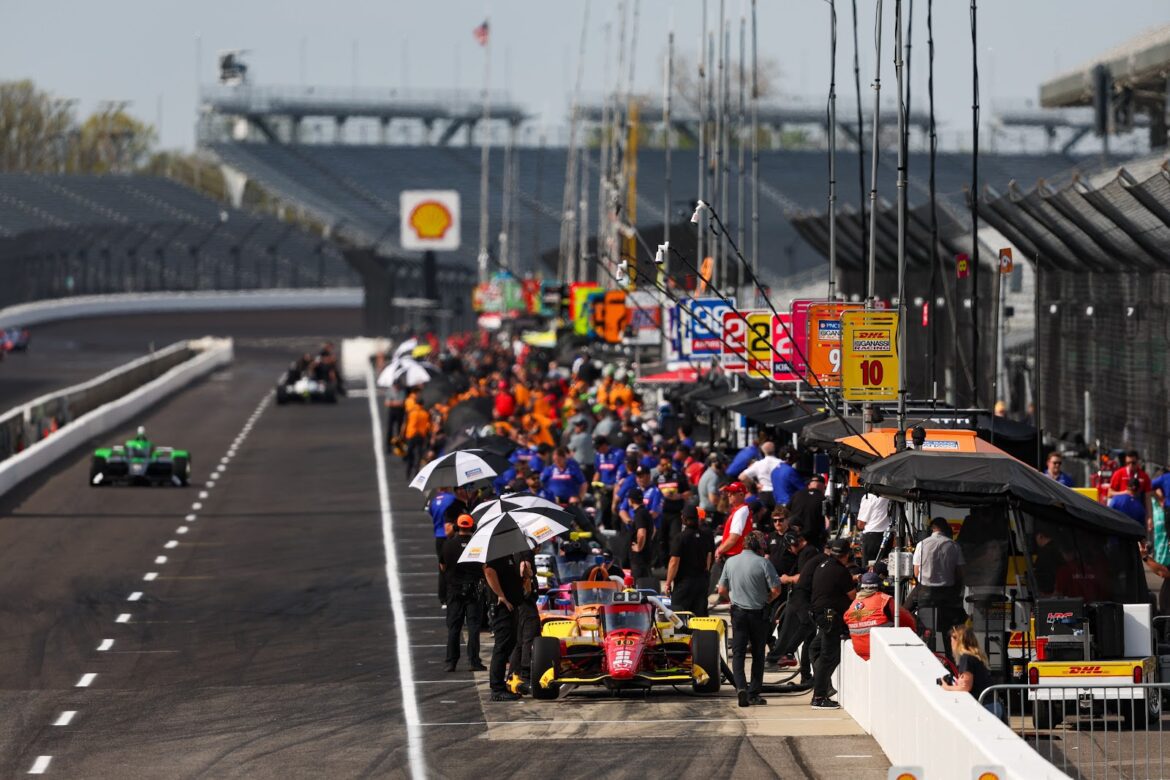Internet Outage Disrupts IndyCar Open Test at Indianapolis Motor Speedway
On Wednesday, the much-anticipated Open Test for the IndyCar series at Indianapolis Motor Speedway was marked by unexpected drama that unfolded off the track. The first session, which was set to feature all 34 cars entered for the prestigious 500-mile race, faced an abrupt cancellation shortly after it began due to a complete failure of the venue’s internet system.
The disruption in communication among race officials, marshals, and team members was immediate and significant. In a sport that is increasingly reliant on technology, a loss of internet connectivity translates into far more than just a disruption of signal—it equates to a loss of control over the event itself. In today’s digital age, effective communication is crucial to the smooth operation of any racing event, especially one as complex as the Indy 500.
According to noted motorsport journalist Marshall Pruett from RACER, drivers had begun their customary installation laps at 10 a.m. However, they quickly returned to the pits for inspections. Just when it appeared that everything was set for serious practice, the systems locked up. Without a stable internet connection, it became impossible to maintain contact with the 34 pit stands, access crucial telemetry data, or manage the day’s schedule effectively.
As a response to this unexpected setback, the IndyCar series had to reorganize its schedule for the day. The new plan aimed for the veterans to return to the track at 12:45 p.m. local time, followed by a subsequent testing window for rookies and drivers who still needed to complete their required acclimatization laps mandated by IndyCar regulations.
Despite the frustration stemming from this technological hiccup, the incident underscores the pivotal role that technology plays in modern racing. Today, technology is as vital to a team’s success as aerodynamics and tire grip. The reliance on digital infrastructure means that even a seemingly minor issue, such as a Wi-Fi outage, can become a potential Achilles’ heel for high-stakes events like the Indy 500.
It is worth noting that the leadership within IndyCar showed agility in responding to the situation. With a quick adaptation to the schedule, they aimed to minimize the disruption and keep everything on track for the month of May, leading up to one of the most iconic races in motorsport history.
The Indy 500 is not only a test of speed and endurance but also a showcase of the latest in racing technology. Teams utilize advanced data analysis and telemetry to make real-time adjustments to their vehicles, enhancing performance and strategy. This reliance on technology emphasizes the importance of maintaining robust communication systems that can support the demands of the racing environment.
In the world of IndyCar, every millisecond counts, and being disconnected can mean the difference between a successful lap and a missed opportunity. As teams prepare for the grueling demands of the Indy 500, they rely heavily on data-sharing and instant communication to ensure that every aspect of their performance is optimized.
The protocols for the Open Test are designed to give teams ample opportunity to fine-tune their setups and strategies. However, the internet outage served as a stark reminder of how critical these systems are to the overall operation of the event. The ability to share telemetry data, which includes information about speed, tire performance, and fuel consumption, is essential for teams in their quest for victory.
Moreover, the incident highlighted the increasing complexity of race management in an era where technology is intertwined with every facet of the sport. As teams work to adapt their vehicles to the unique characteristics of the Indianapolis Motor Speedway, they do so with the understanding that their success hinges not just on mechanical prowess but also on their ability to leverage technology effectively.
Looking ahead, the IndyCar series will continue to adapt and evolve in response to the challenges posed by modern racing. The reliance on technology is only expected to grow, as teams seek to gain competitive advantages through data analysis and digital strategies. This ongoing evolution will necessitate ongoing investments in infrastructure to ensure that communication systems remain robust and reliable.
As the month of May progresses, fans and teams alike will be keeping a close watch on how these technological advancements play out on the track. The Indy 500 is not just a race; it is a celebration of speed, precision, and innovation. Each year, it draws in thousands of spectators and millions of viewers worldwide, all eager to witness the pageantry and excitement that this historic event brings.
In conclusion, while the internet outage at the Open Test was an unfortunate event, it serves as a critical reminder of the importance of technology in the world of IndyCar racing. As teams gear up for the challenges that lie ahead, the focus will remain on ensuring that all systems are go, both on and off the track. The commitment to excellence and the pursuit of speed will continue to define the legacy of the Indy 500 and the broader IndyCar series in the years to come.
As the racing community rallies together to address these challenges, there is a shared understanding that the sport will only grow stronger. The lessons learned from incidents like the internet outage will pave the way for more resilient systems and enhanced communication protocols, ensuring that the spirit of competition remains alive and well in the fast-paced world of IndyCar racing.
